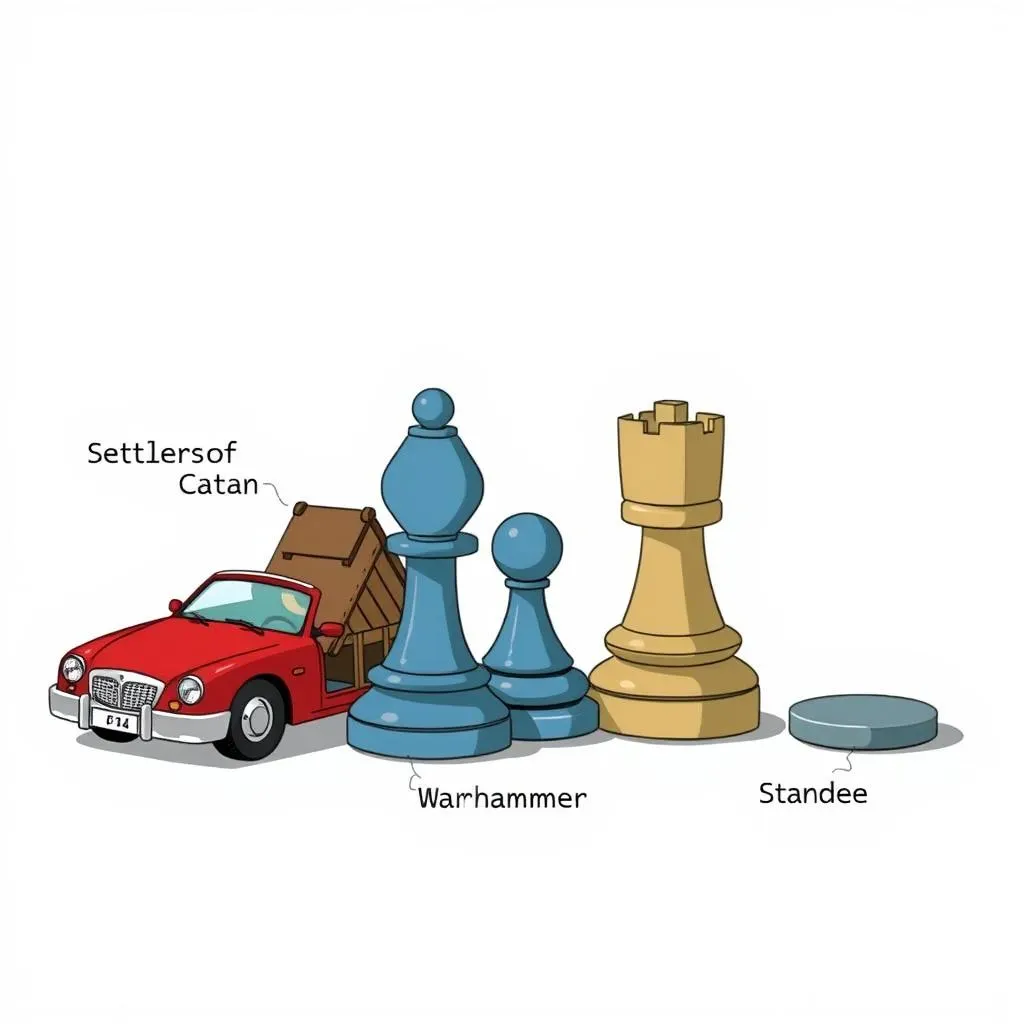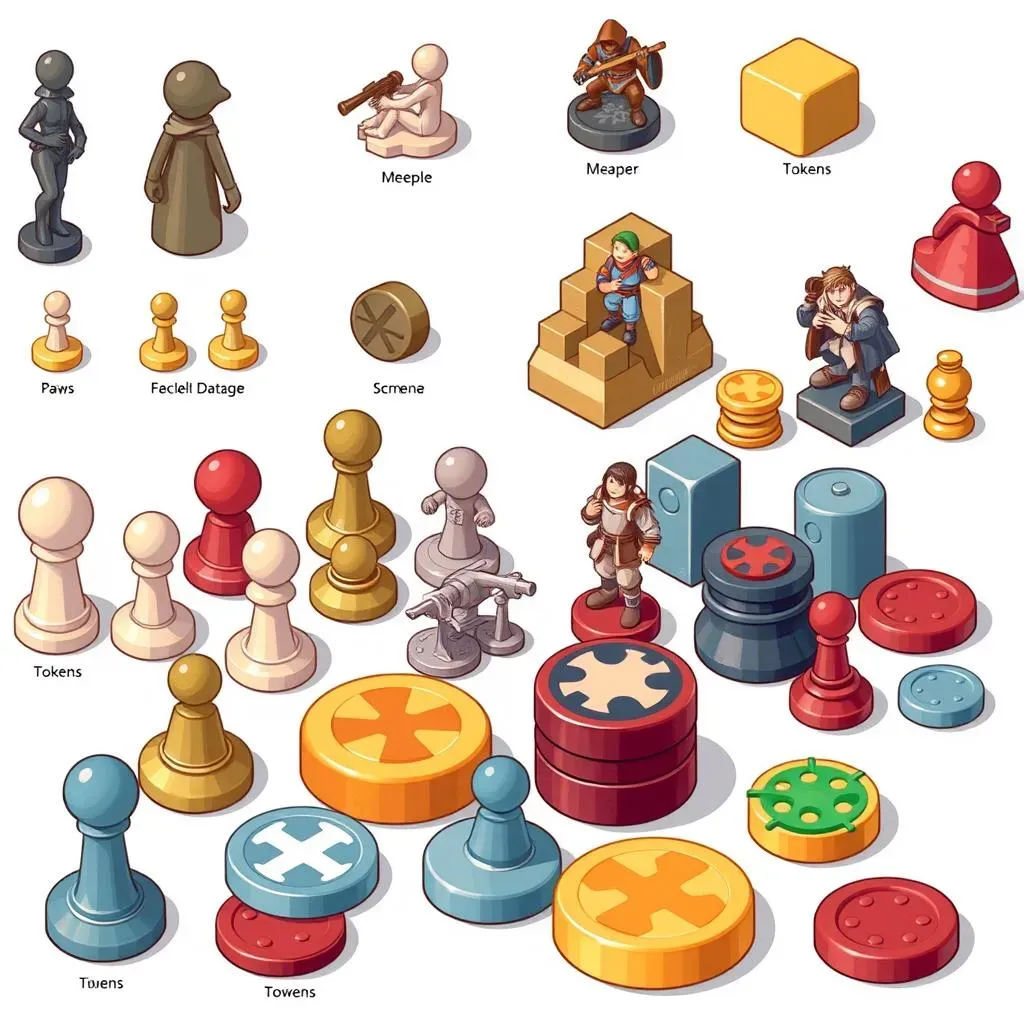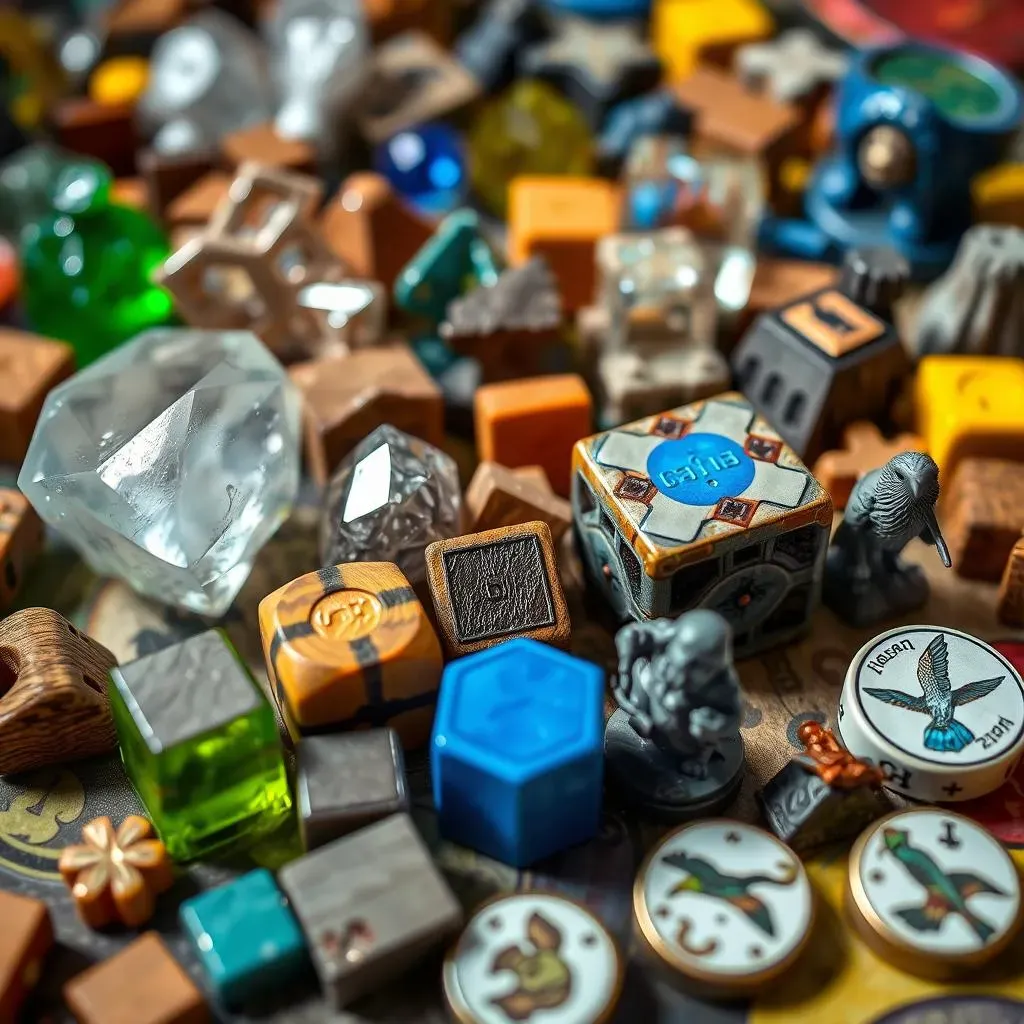Table of Contents
Have you ever sat down to play a board game and wondered, "What are those little things called?" You know, the ones you move around the board? They're not just "things," they actually have names, and sometimes, they have very specific purposes. In this article, we’re going to uncover the mystery behind those small but essential components. We'll explore the common terms used for them, like "pieces," "tokens," and "pawns," and we'll also look at some of the more unique names they get in different games. Whether you are a board game newbie or a seasoned pro, knowing what these bits and bobs are called will help you understand game rules better. It also allows you to talk about them like a pro! So, get ready to learn all about the fascinating world of board game components and what are the player pieces called in board games. Let's get started, shall we?
Common Names for Board Game Pieces
Common Names for Board Game Pieces
The Usual Suspects: Pieces, Tokens, and Pawns
Okay, so you've got your board game ready to go, and there are those little bits you move around. What do you call them? Well, most of the time, people just say "pieces." It's like the all-purpose word for anything you move or place on the board. But, if you want to get a bit more specific, you might call them "tokens." Think of tokens like little markers that represent something in the game, it could be a player, a resource, or maybe even a score. And then there are "pawns." These are the classic little figures, often shaped like a person or a simple peg, that you move from space to space. They're usually used to represent players and their journey across the board. So, "pieces" is a good general term, but "tokens" and "pawns" give you a bit more detail.
It's funny, isn't it? We've all played games for years, and we just call them 'things' or 'the little guys.' But these terms actually help us understand their role in the game. For example, in Monopoly, your car, dog, or hat is a "piece" but also a "pawn" because you're moving it around the board for yourself. In a game like Settlers of Catan, the little wooden settlements and roads are "tokens" that represent your holdings on the board. Knowing this can make you a board game master, or at least, you'll sound like one when you are explaining the game to your friends!
Term | Description | Example |
|---|---|---|
Piece | A general term for anything moved or placed on the board. | Your car in Monopoly |
Token | A marker that represents something in the game. | The wooden resources in Settlers of Catan. |
Pawn | A small figure, often shaped like a person or peg, moved around the board. | The small figures in chess. |
More Specific Names: Meeples, Miniatures, and Standees
Now, let's get into some of the cooler, more specific names! Have you heard of a "meeple?" It's a funny word, but it's actually a very common term in modern board games. Meeples are little wooden figures, usually shaped like a person, but sometimes they can be shaped like other things. They originated in the game Carcassonne, and are super popular. Then we have "miniatures." These are detailed little figures, often made of plastic, that are usually used in games with a strong theme, like a fantasy or sci-fi game. Think of the detailed figures in a game like Warhammer or Gloomhaven. And finally, there are "standees." These are usually cardboard pieces that stand upright, often with a picture on them. They're a cheaper option than miniatures, but they still bring a lot of character to the game.
It's kind of like learning a new language, isn't it? The more board games you play, the more you start to hear and use these specific terms. It's a great way to show off your board game knowledge. I think the designers use these different names to bring the game to life. Imagine a game where they call everything "piece." It would be boring. But when you have meeples, miniatures, and standees, it starts to feel more immersive and fun. I think that's what makes board games so special, the details!
- Meeple: A small, wooden figure, often person-shaped.
- Miniature: A detailed, often plastic, figure.
- Standee: A cardboard piece that stands upright.
Types of Game Pieces and Their Uses
Types of Game Pieces and Their Uses
Player Representation: Pawns, Meeples, and Miniatures
Okay, let's talk about how these pieces are actually used in games. First up, we've got the pieces that represent you, the player! Pawns, meeples, and miniatures are all used for this, but they each bring something different to the table. Pawns are usually the most basic, just moving around the board. Meeples add a bit more character and are often used to show what your player is doing, like building a city in Carcassonne. Miniatures, well, they take things to a whole new level. They're not just moving around; they are your character, with all their details and special gear. It's like playing with action figures but with a purpose!
I find it fascinating how these different types of player pieces can change the feel of the game. A simple pawn makes you focus on the strategy, while a detailed miniature makes you feel like you are actually there, in that world. It is like the game is coming to life. For example, in a game like "Ticket to Ride," you're moving little train cars which represent your railway routes. This is very different from a game like "Zombicide," where you are moving detailed miniatures that represent your survival team. The type of piece really impacts the way you experience the game. It's not just about moving stuff around!
Resource Management: Tokens and Counters
Now, let's look at tokens and counters. These aren't usually player pieces, but they're super important for managing resources and keeping track of things in a game. Tokens can represent anything from gold coins to building materials to magical spells. Think of the little wooden cubes in "Puerto Rico" or the cardboard money in "Monopoly." Counters, on the other hand, are more about keeping score or tracking how much of something you have. They are the little markers you move on a score track or the dice you use to count damage in a battle. They're the unsung heroes of the board game world, doing all the behind-the-scenes work to make the game run smoothly.
I've always been impressed by the creativity in how games use these tokens and counters. They're not just random bits; they're a way to make the game's mechanics feel more real. In a game like "7 Wonders," you have tokens representing military strength or scientific discoveries, and they’re all so colorful and unique. In the same way, counters really help to keep score, which is important to know if you are winning or losing. I think that's why I like board games so much, it is the way they can turn abstract ideas into something you can touch and manage, it is really cool.
Piece Type | Primary Use | Examples |
|---|---|---|
Pawns | Basic player representation | Chess pawns, Monopoly player pieces |
Meeples | Player representation with more character | Carcassonne meeples, Agricola workers |
Miniatures | Detailed player or character representation | Warhammer figures, Gloomhaven characters |
Tokens | Representing resources, items, or abstract concepts | Catan resources, Pandemic disease cubes |
Counters | Tracking scores, or game state | Score markers, damage trackers |
Specialized Pieces: Dice, Cards, and More
Finally, let's talk about some of the more specialized pieces that you find in board games. Dice are a classic example, they introduce an element of chance, and they are used for all sorts of things from moving around the board to resolving conflicts. Cards are another staple, they can provide actions for you to take, or give you special abilities, or even tell a story. And then there are other unique components, like the little wooden buildings in "Ticket to Ride" or the plastic tiles in "Carcassonne." These aren't player pieces, but they are crucial for how the game works. I think that these pieces add a lot of flavor and variety to board games. I think they are what make each game unique and memorable.
I always think about how the designers put so much thought into each piece. It's not just about having something to move around, it's about creating a whole experience. A nicely designed deck of cards or a set of custom dice can make a game so much more fun. It's like they are telling a story through the components, and I think that's really cool. They’re not just ‘things,’ they are part of the game’s language and they all contribute to the overall enjoyment and strategic depth of the game. When I play a game, I think the pieces are part of the experience as much as the rules.
Beyond Pawns: Unique Board Game Pieces
Beyond Pawns: Unique Board Game Pieces
Custom Shapes and Materials
Okay, so we've covered the basics, but what about those games that really go wild with their pieces? I'm talking about the games where the pieces aren't just pawns or meeples, but custom shapes made from all sorts of materials. Think about the little plastic crystals in "Splendor" or the oddly shaped wooden pieces in "Patchwork." These aren't just functional; they add a whole new layer of tactile enjoyment to the game. It's like the designers are saying, "We're not just making a game; we're making an experience." And I think they nail it!
I've always been fascinated by how much a game's pieces can impact the overall feel. A game with simple wooden cubes has a very different vibe from a game with detailed, custom-molded plastic pieces. It's like the pieces themselves become part of the game's story. For example, in a game like "Azul," the colorful, patterned tiles are a central part of the experience. They're not just pieces; they are the very heart of the game. It's not just about moving them around, it's about how they feel in your hands and how they look on the board. It's like they are little works of art.
- Splendor: Plastic crystals
- Patchwork: Oddly shaped wooden pieces
- Azul: Patterned tiles
Themed Components: From Resources to Relics
Then there are the pieces that are specifically designed to fit the game's theme. These can be anything from tiny barrels representing resources to detailed miniatures representing ancient relics or mythical creatures. In "Terraforming Mars," you have these cool little plastic cubes representing different resources, and they all have a unique color, so it feels like you're actually building up a colony on Mars. In "Gloomhaven," the miniatures are so detailed that they feel like characters from a fantasy novel. It's like the game is trying to immerse you in its world, and these themed pieces are a big part of that.
I think the level of detail in some of these pieces is really impressive. It shows how much thought the designers put into the game. They are not just giving you the bare minimum pieces to play the game, they are giving you a collection of items to help you get involved with the game. For example, in a game like "Wingspan," the bird tokens are not just simple cardboard cutouts; they are detailed illustrations that capture the beauty of each bird. This attention to detail really makes the game feel special. It's not just about the game play, it's about the whole experience, and the pieces are a big part of that.
Game | Themed Components |
|---|---|
Terraforming Mars | Plastic cubes representing resources |
Gloomhaven | Detailed miniatures representing characters |
Wingspan | Detailed bird illustrations |
Pieces with Dual Purposes
Finally, let's talk about pieces that have dual purposes. Sometimes, a single piece can represent multiple things at once. For example, in some games, a token might represent both a resource and a score marker. Or a card might act as both a resource and a tool. This is often done in games that have limited components or want to keep things streamlined. It's clever game design and it keeps the game simple and easy to learn. I think the designers are trying to make the game more efficient and elegant.
I've always admired the games that can do this, it's like they're getting the most out of every component. It is like they are using every piece to its full potential. It's a sign of clever and thoughtful design, I think. In a game like "7 Wonders Duel," the cards that you draft are also used as resources to build your city. This dual purpose makes the game more strategic and engaging. It is not just about collecting pieces, it is about using them in different ways to win the game. It is like they are making the most out of each little piece, and I think that is really smart.